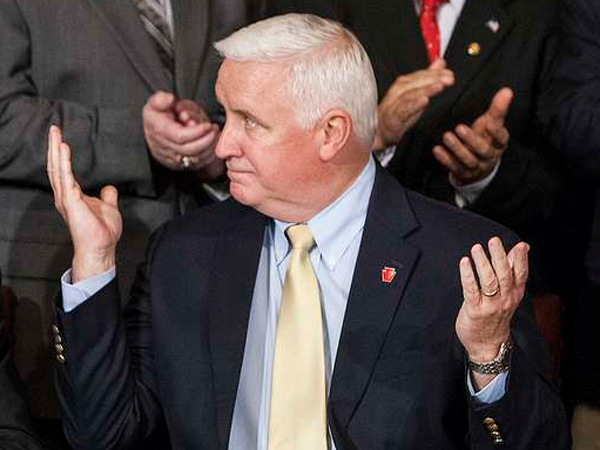|
|
|
|
CAAP Update provides regular information on items of interest to Community Action agencies in Pennsylvania. |
|
| | OMB Releases Super Circular |  | |
The Office of Management and Budget (OMB), yesterday, released the super circular for public inspection.
The final guidance will be published on December 26 in the federal register and codified in Title 2 of the Code of Federal Register. Federal Agencies have six months from December 26th to issue regulations implementing this guidance. Those regulations will be effective one year from the December 26, 2013 publication date and will apply to federal awards issued after December 26, 2014.

The regulations will supersede and streamline requirements from OMB Circulars A-21, A-87, A-110, and A-122; Circulars A-89, A-102, and A-133; and the guidance in Circular A-50 on Single Audit Act follow-up.
|
| | CAAP Announces DSA Nominations |  | |
Honoring those that have made an outstanding contribution to service for low-income families and communities in Pennsylvania...
CAAP is pleased to announce the expansion of the annual Distinguished Service Awards for 2014. For several years, CAAP has given the Sargent Shriver Community Service Award to an individual who represent all the qualities Sargent Shriver demonstrated as a champion of many social programs and organizations, including Community Action, to show appreciation for that person's work in community service.
This year, in conjunction with the 50th anniversary of the signing of the Economic Opportunity Act of 1964, CAAP is expanding the Distinguished Service Awards to include a number of individual and agency based awards. CAAP members are encouraged to nominate individuals and organizations that enhance the lives of individuals and local communities through their involvement, innovation, leadership or advocacy, as well as personal and organizational generosity. The goal of the CAAP Distinguished Service Awards Program is to honor persons and organizations for outstanding performance.
Eight awards will be offered:
Sargent Shriver Community Service Award
Leader of the Year
Board Member of the Year
Outstanding Advocacy in the Field of Anti-Poverty/Community Development
Staff Member of the Year
Innovative Program of the Year
Professional Advancement Award
Public Official of the Year
The awards will be presented on April 9, 2014 during a ceremony at the CAAP annual conference in Harrisburg, PA. Nomination form can be downloaded from the CAAP website.
|
| | Protecting the Future |  |
Ten bills are now signed into law, which focus on enhancing Pennsylvania's child protection laws. The bills include SBs 23, 28, 30, 34 and HBs 321, 414, 726, 1201 and  1594. Suggestions in the November 2012 report by the Pennsylvania Task Force on Child Protection are reflected in the laws. The bipartisan legislation heightens child abuse awareness and improves the health and welfare of children throughout the commonwealth. 1594. Suggestions in the November 2012 report by the Pennsylvania Task Force on Child Protection are reflected in the laws. The bipartisan legislation heightens child abuse awareness and improves the health and welfare of children throughout the commonwealth.
Congratulations to long-time CAAP friend Cathleen Palm, who advocated tirelessly for many of the provisions in the laws. Cathleen and two of her children were present during Governor Corbett's signing of the law.
|
| | Children & Poverty Dialogue |  |
As the 50th anniversary of the War on Poverty approaches, Mark Shriver has written an essay for the New York Times on why we have made progress in poverty for seniors but lost ground for children.
Shriver and the paper's editors accepted comments on the essay. Comments and a follow up response will be published in this Sunday's NYT Review.
Shriver is hoping to spark a dialogue on what we need to do as a country to eliminate poverty once and for all.
|
| | Some PA Facts |  | |
Pennsylvania now ranks third out of the top ten natural gas producing states, thanks to the Marcellus Shale boom. From 2011 to 2012, the rate of gas production excelled 72% which is the speediest development rate of any state; however, Texas still takes first place for the biggest gas-producer in the United States. The EIA predicts Pennsylvania will transition to second place in 2013 natural gas production.
Pennsylvania places in the top five for states' complete dollar worth of financial production of craft beer manufacturers. California's output totaled $4.7 billion, Texas $2.3 and New York $2.2 billion compared to Pennsylvania's $2 billion. In 2012, $33.9 billion went to the U.S. economy from independent craft brewers. |
| |
Corbett Administration, Dismal Poll & Budget
|  |
Reporting from The Advocates' Agenda
Wednesday brought another round of poll numbers that aren't likely to bring cheer to Governor Corbett. The lead on the announcement of the latest Quinnipiac University poll reinforces that the Governor has a "negative 36 to 53 approval rating, his worst net score ever." It also hammered home that of the voters polled - 56 percent responded that "he does not deserve reelection."
 Poll numbers weren't the only figures giving the Corbett Administration heartburn Wednesday. It was also the day for the 2013-2014 mid-year budget briefing where Secretary of the budget Charles Zogby comes to the tell the good, bad and in this case, ugly reality about the health of the state's fiscal well-being and what it portends for 2014-2015. Poll numbers weren't the only figures giving the Corbett Administration heartburn Wednesday. It was also the day for the 2013-2014 mid-year budget briefing where Secretary of the budget Charles Zogby comes to the tell the good, bad and in this case, ugly reality about the health of the state's fiscal well-being and what it portends for 2014-2015.
The briefing led to media headlines across PA like this one - Pa. Budget Secretary Sees Billion-Dollar Budget Gap Looming Next Year. It also confirmed the November projections and warning of the state's Independent Fiscal Office (IFO) about the state's "structural deficit" that prompted headlines about "grim" fiscal decisions ahead.
The Corbett Administration advised state agencies this summer that in preparing their 2014-2015 budget requests, they must maintain level funding. Also they are not to consider using state dollars to replace any federal funds. At level funding, Zogby noted Wednesday that is the equivalent of an "eight percent cut due to personnel cost increases for the typical agency operating budget."
The Budget Secretary opened the briefing reminding where the money goes:
- $10.96 billion - 38.6 percent for Public Welfare
- $9.95 billion - 35.1 percent for Pre-K through 12th grade education
- $2.08 billion - 7.3 percent for Corrections/Probation and Parole
- $1.59 billion - 5.6 percent for Higher Education
- $1.15 billion - 4.1 percent for debt service
- $2.64 billion - 9.3 percent for everything else
Then it was on to key "challenges," including an emphasis on state and school employee's retirement costs - growth that will cost about $610 million.
The other red flag for the Corbett administration "managing growth in welfare spending in light of continued health care cost inflation" ($600 million) and a reduction in the federal match for Medicaid (FMAP) to the tune of $300 million.
Finally correction costs can't be overlooked with projections that costs to incarcerate and monitor released offenders will require another $140 million.
Responding to an area ripe for criticism by advocates and defense by the Corbett Administration, Zogby reminded "For the third consecutive year, the budget increases funding for education and early childhood development, including state dollars for Basic Education Funding at the highest level in Pennsylvania history."
Heavily touted by the Corbett Administration is the path they've taken to reduce "administrative spending" particularly how they have worked to reduce staffing levels. "Since Governor Corbett took office in January 2011, filled staffing levels have declined by 2,788 positions, or 3.6 percent." In November 2013, the Commonwealth's workforce was 73,875 employees compared to 76,663 in January 2011.
|
|
|
Shrinking to Get Bigger
|  | |
The Pennsylvania State House of Representatives concluded their last voting session of the year on Wednesday with, among many other bills, a vote on two measures to reduce the size of the General Assembly.
HB 1234 and HB 1716 by Speaker of the House Sam Smith (R-Jefferson) propose the reduction of House members from 203 to 153 and Senate members from 50 to 38, respectively. It is estimated the number of constituents represented would increase from the current 62,573 to 83,022. Constitutional amendments like these require passage in two consecutive sessions.
|
|
|
Who Needs a Turtle Dove Anyway?
|  | |
According to PNC Wealth Management, the cost for all the
items on the 12 Days of Christmas list would be a little over $114,000.
|
|
|
|
|
|
|
| | About Us |  | |
Community Action Association of Pennsylvania
222 Pine Street
Harrisburg, PA 17101
|
|
This newsletter is financed, in part, by a CSBG grant from the Commonwealth of Pennsylvania, Department of Community and Economic Development. |
| |
|
|